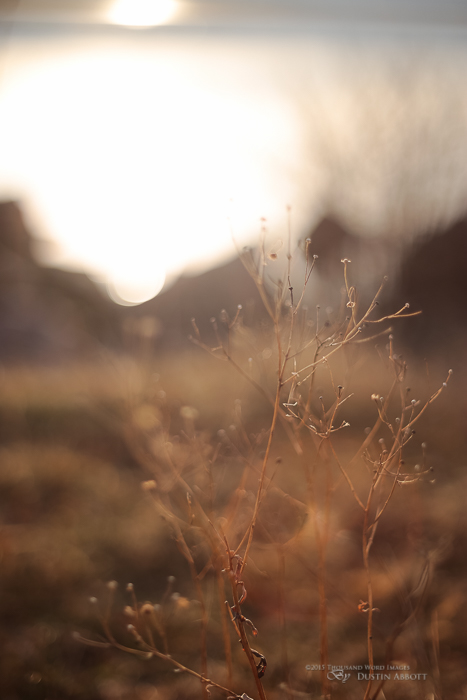We live in a somewhat ironic day. Many of the optical defects of past years have been resolved, and lenses are no longer prone to flare or odd optical quirks like bokeh that “swirls” around the periphery of the image. Most modern lenses have rich contrast and are sharp wide open. Modern DSLR sensors have amazing high ISO performance, so the days of heavy grain/noise are behind us. So what do we do? We purchase a cool piece of software like Alien Skin Exposure to electronically emulate all of those defects that our gear no longer has. Light leaks, grain, reduced contrast and faded colors. Weird!

And yet those looks are so magical!
Our advantage today is that we can selectively apply those looks when and where we want them, and can minimize the downsides by masking off areas we don’t want affected.
Few modern photographers are interested in really returning to the days of film, but it is a lot of those film stocks and their unique qualities that have inspired a good number of the presets in Exposure. But this article focuses on another aspect of Exposure’s “analog soul”, and that is the influence of vintage glass.
I have some photographer friends that just love film. They simply get more stubborn as their opportunities to get film dwindle and development shops drop like flies. I must confess that film has no attraction to me; I’m delighted to have full frame bodies where I can occasionally shoot ISO 25,600 and still get acceptable results! But vintage/analog glass is another matter. I fell in love with a number of vintage lenses that I pull out and use regularly despite a kit full (12, I believe!) of high end modern lenses.
Why?
I’m a professional lens reviewer. I have a lot of lenses flow through my hands (13 so far this year) and so I get a little spoiled and jaded by getting to use the best all the time. If I could offer up one criticism of many modern lenses, it is that they are often a bit “clinical”. They lack personality. In the process of engineering out all of the defects lenses sometimes lose their souls.
This just isn’t the case with vintage glass. For example, right now I have an SMC Takumar 50mm f/1.4 sitting on my workbench with a black light shining down into it. Why would I do such a crazy thing? Because a lot of these 40+ year 50mm Takumars have elements that can yellow a bit over time due to…wait for it…a slightly radioactive Thorium element that is part of the optical formula. I kid you not! Black light (UV) actually helps to clear the yellowing from the elements and improves light transmission. It’s a bit of a conundrum, though, as the yellowing produces really unique, warm colors that set the end result apart from other lenses. A lot of shots look wonderful right out of camera in a way that more color neutral lenses do not. I’m hoping that I don’t regret eliminating that character. I’ll probably end up adding a warming filter back into a lot of the images through Exposure! Here are few right out of camera from the SMC Takumar (while it was still yellow!)


Likewise one of my all-time favorite vintage lenses – a Soviet era Helios 44-2 (58mm f/2 lens). I got my copy shipped from Russia for less than $30, but pretty much every image I’ve ever shared from it has been a critical success and a good number of them have been commercial successes. It just has a very unique rendering due to its unique optical imperfections. It is extremely flare prone, but in a wonderfully artistic way.

You know that cool swirling bokeh effect in the Bokeh section of Exposure? That is actually the way this lens renders bokeh at certain distances. This bokeh is straight out of camera (or the lens, rather!):

You can check out this article that compares a modern 50mm f/1.4 prime (Rokinon) against a rogue’s gallery of vintage 50mm primes. The article has both mini reviews and art galleries from each vintage lens. I’m willing to bet you’ll find a lot of images there that you just love the look of!
There are a ton of great vintage 135mm lenses that are fabulous portrait lenses. They tend to be very compact and easy to bring along, too. I’ve got 28mm and 35mm SMC Takumar primes that still produce amazingly unique images and get into my portrait rotation and a vintage Zeiss prime that is my go-to video lens for my YouTube videos.

Want to set your work apart from every other guy with a DSLR? Look no further than some vintage glass.
OK, so there are downsides. None of these lenses have mounts native to your modern DSLR, but fortunately very cheap adapters can be had off Ebay for often no more than $10. Spend a couple of bucks more and get one with a focus confirm chip on it. Yes, they will be both manual focus and you will have to control the aperture through an aperture ring on the lens, but the lenses meter fine and produce some great pictures. The good news is that there are some beautifully made and optically unique and wonderful lenses out there for not much money. The popularity of some models has driven up their price on Ebay, but you might lucky at pawn shops or estate sales, too. Just beware: using vintage glass can get a little addictive.
And if you can’t handle the hassle, fortunately Exposure is very easy to use. Just go ahead and add some imperfections to your otherwise perfect modern images…weird! P.S. If you use my name “dustinabbott” as a coupon code it will give you 10% off everything in the Alien Skin store. Enjoy!
This article first appeared on the Alien Skin blog here: http://www.alienskin.com/blog/2015/vintage-glass-and-looks/










